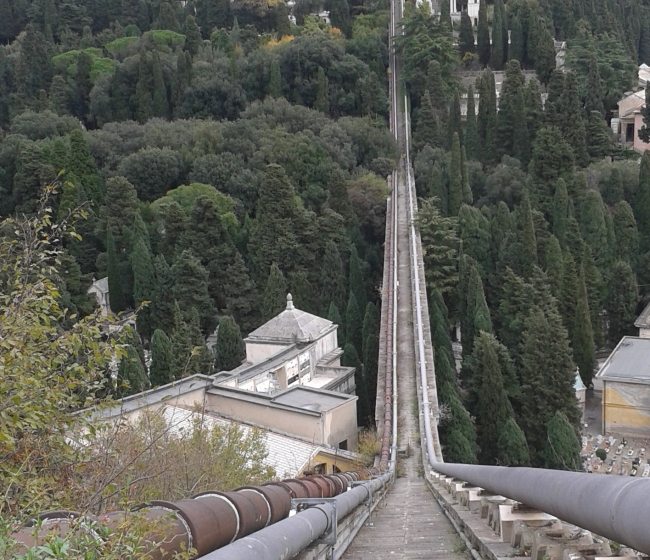The historic aqueduct
From the springs of the high valleys to the sea. A true “river” of water, which through an ancient viaduct in the Bisagno Valley has guaranteed the water supply to Genoa and its port for centuries. Crossing woods and paths, skirting the monumental cemetery of Staglieno, through an often hidden and, in the urban part, underground route, it finally reaches the Porto Antico (Old Port).
Genoa's historic aqueduct is an impressive structure, built in the Roman era in the valley bed of Bisagno river, to supply the city with water at the start of the 1200s and subsequently enlarged and improved through the middle of the 1600s; today, it is a highly appealing hiking itinerary for both history and nature lovers.
In the Middle Ages, it was expanded to a higher altitude (about 50 metres), so as to be able to reach the western outskirts of the city, using its increased slope. Extensions inland almost as far as Bargagli were built between the 14th and 18th centuries, and the grand water bridges were created, such as the siphon bridge over the Geirato river, in Molassana, in 1777, which has 14 arches stretching over 640 metres and was a masterpiece of hydraulic engineering in its day. The aqueduct was in operation until the middle of the 19th century but the water continued to reach the neighbourhood of the Old Port as late as 1951. Part of the 40-kilometre length has disappeared with the growth of the city but several long, level stretches remain that can now be travelled on foot or by bike, amid the homes and gardens of the old villages of the Bisagno valley.
The itinerary can be tackled in its entirety or for only part of the way, as numerous ancient roads ("creuze") and paths link the valley to the old aqueduct.
Guided tours whit a professional trekking guide are available here.



